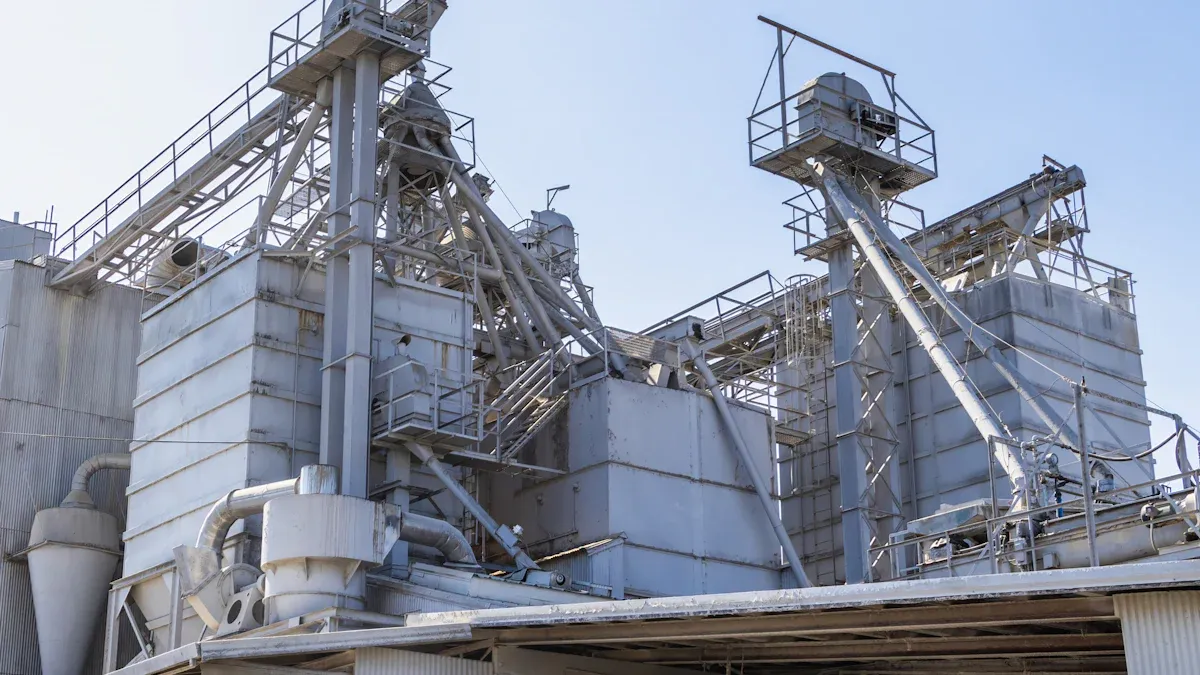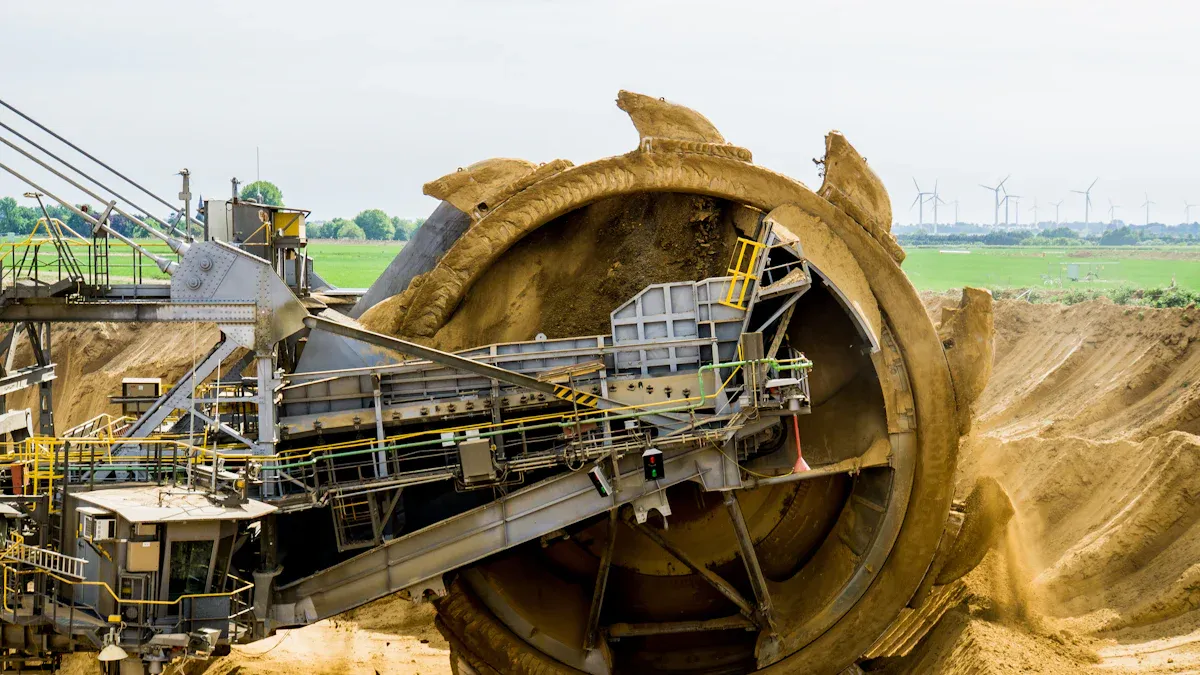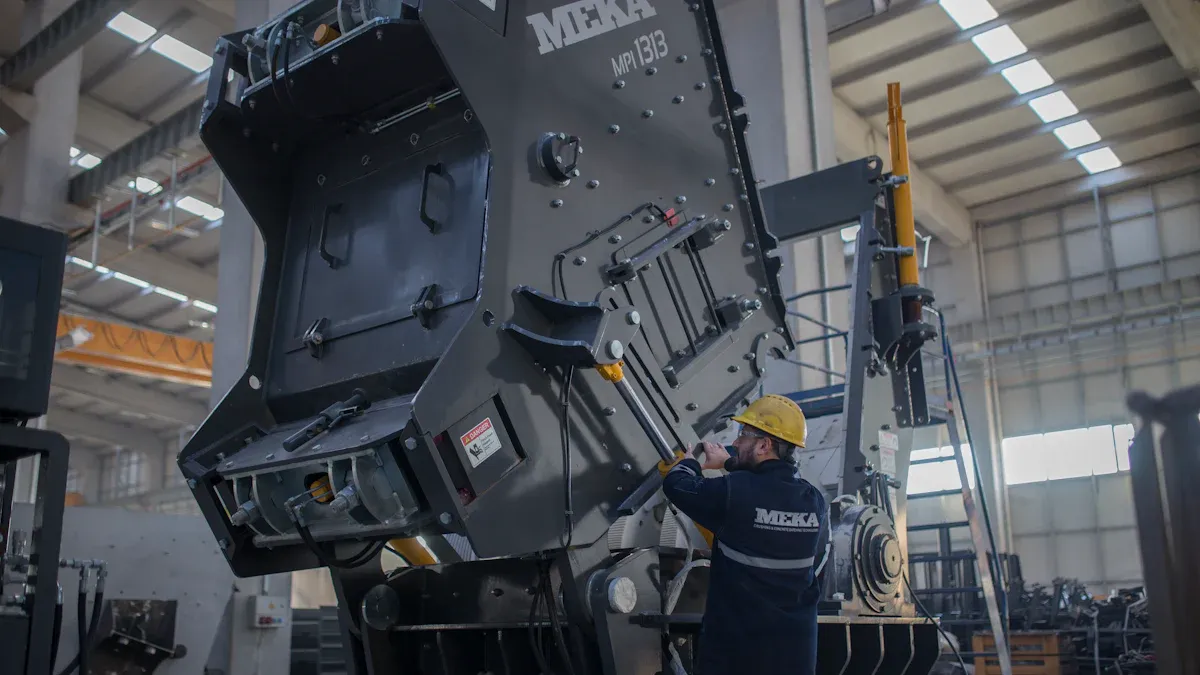
The cone crusher mantle plays a vital role in crushing and reducing materials into smaller sizes. This component endures constant pressure and friction, making its durability essential for efficient operations. You can extend the mantle's life by adopting three effective strategies. First, use proper feeding techniques to reduce unnecessary stress on the cone crusher. Second, learn to identify signs of wear early to replace the mantle at the right time. Lastly, prioritize preventative maintenance to keep the equipment running smoothly and minimize unexpected failures.

Overloading your cone crusher can lead to significant wear and tear on the mantle and liners. When too much material enters the crushing chamber, the equipment struggles to process it efficiently. This increases stress on the components, leading to faster wear and reduced performance. To avoid overloading, monitor the feed rate closely and ensure it stays within the recommended limits for your specific cone crusher model. Using automated systems to regulate feed rates can also help maintain optimal conditions.
Uneven material distribution in the crushing chamber can cause uneven wear on the cone crusher liners. This not only shortens the wear life of the liners but also reduces the overall efficiency of the crushing equipment. To achieve correct feed distribution, ensure that material enters the crusher evenly across the entire width of the feed opening. Studies have shown that ensuring even material distribution can improve production by up to 20% and reduce sand production by 20%. For example, the HP200e model demonstrated an additional 60,000 tons of production per year when material was distributed evenly.
| Model | Production Improvement | Additional Tons per Year | Yield Improvement | Less Sand Production |
|---|---|---|---|---|
| HP200e | 20% | 60,000 | 10% | 20% |
| HP350e | 10% | 45,000 | N/A | N/A |
| Overall | N/A | 30,000 | N/A | N/A |
Choosing the right feed size and material type is critical for maximizing the efficiency of cone crushers. If the feed size is too small, it can restrict material flow and reduce capacity. On the other hand, oversized feed can cause excessive wear on the mantle and liners, leading to frequent replacements. The ideal feed size should be larger than 10-20% of the closed-side receiving opening but smaller than 90% of the open-side receiving opening. Additionally, consider the physical properties of the material, such as moisture content and hardness, to ensure compatibility with your crushing equipment.
Proper feed size selection improves crusher capacity and efficiency.
Oversized feed increases wear and reduces efficiency.
Recommended feed size: 10-20% larger than the closed-side opening and less than 90% of the open-side opening.
Material properties like work index and moisture content also affect performance.
By following these feeding techniques, you can optimize the performance of your cone crushers, extend the wear life of the liners, and reduce downtime caused by frequent maintenance.

You can often spot wear on the cone crusher mantle through visual inspection. Look for uneven surfaces or grooves forming on the mantle. These marks indicate abrasive wear caused by material grinding against the surface. Cracks or chips may also appear, signaling impact wear from oversized feed or hard materials. Regularly inspect the mantle and liners for these signs to catch wear early. Using wear indicators, such as paint or specialized coatings, can help you monitor wear progression more effectively.
Wear on the mantle often leads to noticeable performance issues in cone crushers. Reduced throughput or inconsistent material size are common signs. You might also notice increased power consumption as the crusher works harder to process materials. Monitoring these metrics can help you identify wear before it causes significant damage. Best practices include scheduled inspections and performance monitoring. By understanding wear patterns like abrasive, impact, and fatigue wear, you can predict when replacements are necessary. Measuring wear from safe access points allows you to estimate the remaining service life of the mantle and liners.
Key indicators of wear include:
Reduced throughput and inconsistent material size.
Increased power consumption.
High wear areas identified during inspections.
Knowing when to replace the mantle is crucial for maintaining efficiency and avoiding downtime. Compare the current mantle profile to its original dimensi ons to determine the remaining thickness. If the wear has significantly reduced the mantle's thickness, it’s time for a replacement. Regularly measuring wear ensures you can plan replacements without unexpected interruptions. Replacing the mantle at the right time also improves the service life of the entire crushing chamber, including the liners. This proactive approach keeps your cone crushers running efficiently and extends the life of your crushing equipment.
Regular inspections are essential for maintaining the efficiency of cone crushers and extending the life of their liners. You should schedule inspections weekly, monthly, and annually to identify potential issues before they escalate. During weekly checks, clean the engine compartment, inspect mounts, and ensure all bolts are tightened to the correct torque. Monthly inspections should include removing guards to examine internal components for wear and damage. For example, check the wear liners and adjust or replace them as needed. Annual maintenance involves more comprehensive tasks, such as replacing hydraulic fittings and overhauling the electrical system.
Tip: Use tools like Metso Metrics technology to monitor equipment in real-time. This system tracks operating hours and maintenance logs, helping you plan inspections based on actual performance data. By staying proactive, you can reduce downtime and improve operational efficiency.
Proper lubrication and cooling are critical for the smooth operation of cone crushers. Without adequate lubrication, friction increases, leading to excessive wear on the mantle and other components. You should follow a strict maintenance schedule to keep these systems in top condition. Weekly tasks include checking gearbox oil levels and greasing bearings and rollers. Monthly, inspect hydraulic pumps and motors for leaks or damage. Quarterly, flush the cooling system and refill it with the recommended coolant. These steps prevent overheating and ensure the crushing chamber operates efficiently.
Note: Contaminants in lubricants can cause significant damage. Perform regular lubricant sampling and analysis to detect impurities early. This practice not only extends the life of the cone crusher liners but also enhances overall performance.
Material build-up in the crushing chamber can reduce the efficiency of cone crushers and accelerate wear on the liners. You should clean the chamber regularly to prevent blockages and ensure even material flow. Use tools to remove debris and inspect for any signs of damage. Pay special attention to areas where material tends to accumulate, such as the feed opening and discharge points. Keeping these areas clean minimizes stress on the crushing equipment and improves its lifespan.
Reminder: Always turn off and lock out the equipment before performing any cleaning or maintenance tasks. Safety should be your top priority when working with heavy machinery.
By following these preventative maintenance practices, you can extend the life of your cone crusher liners, reduce wear, and maintain optimal performance. Regular inspections, proper lubrication, and thorough cleaning are simple yet effective ways to keep your crushing equipment running smoothly.
To get the best performance from cone crushers, you need to adjust their settings correctly. Fine-tuning the settings ensures the crushing chamber operates at peak efficiency. For example, adjusting the closed-side setting (CSS) can improve the reduction ratio and produce smaller, more uniform material sizes. Proper adjustments also reduce wear on the cone crusher liners by ensuring the mantle and liners engage the material evenly.
When you adjust a cone crusher for maximum efficiency, you can achieve several benefits:
- Higher throughput capacity due to faster stroke cycles.
- Enhanced size reduction from frequent material engagement.
- Better product shape from rapid mantle movement.
- Maximized uptime with less heat generation and reduced wear costs.
These improvements not only boost productivity but also extend the life of your crushing equipment.
Monitoring output and throughput is essential for maintaining consistent performance in cone crushers. By tracking these metrics, you can identify inefficiencies and make necessary adjustments. For instance, a sudden drop in throughput may indicate uneven material distribution or excessive wear on the liners. Regularly measuring output ensures the crushing chamber operates within its optimal range.
You can use automated systems to monitor performance in real-time. These systems provide data on feed size, material flow, and power consumption. With this information, you can quickly address issues and maintain steady production levels. Consistent monitoring also helps you understand how a cone crusher works under different conditions, allowing you to optimize its performance further.
Using high-quality replacement parts is crucial for extending the life of cone crushers. Premium parts, such as those made from advanced alloys like Metal Matrix Composite (MMC), can last up to three times longer than traditional materials. These parts also reduce wear and improve the durability of the crushing chamber.
High-quality parts offer additional benefits:
- Increased wear life by up to 300%.
- Reduced installation time by up to 50% with innovative designs.
- Enhanced safety and minimized downtime.
OEM parts undergo rigorous testing to ensure they meet high standards of quality and performance. By investing in reliable components, you can reduce maintenance costs and keep your cone crushers running efficiently.
Extending the life of your cone crusher mantle requires a focus on proper feeding, wear recognition, and regular maintenance. These practices not only improve the performance of your cone crusher but also reduce operational costs. For example:
Energy consumption can decrease by up to 30% with proper feeding techniques.
Wear parts may last two to four times longer, minimizing liner replacements.
Fewer production stops and repairs enhance profitability and safety.
By adopting these strategies, you ensure consistent output, lower energy costs, and fewer maintenance interruptions. This proactive approach keeps your equipment running efficiently while saving time and money.
The lifespan of a cone crusher mantle depends on factors like material type, feed size, and maintenance. On average, a mantle lasts between 6 months and 2 years. Proper feeding techniques and regular maintenance can significantly extend its life.
Look for visual signs like grooves, cracks, or uneven surfaces. Performance issues, such as reduced throughput or inconsistent material size, also indicate wear. Regular inspections help you identify these signs early.
Yes, improper feeding causes uneven wear and excessive stress on the mantle. Overloading or feeding oversized material accelerates wear and reduces efficiency. Always follow recommended feeding practices to protect the mantle.
You should inspect the mantle weekly for visible wear and monthly for more detailed checks. Annual inspections should include measuring wear and comparing it to the original dimensions. Regular inspections prevent unexpected failures.
OEM (Original Equipment Manufacturer) parts are designed specifically for your crusher model. They offer better durability, fit, and performance compared to generic parts. Using OEM parts reduces downtime and extends the life of your equipment.
Tip: Always consult your equipment manual for maintenance schedules and part recommendations.